Discover the profound teachings of Laozi (or Lao Tzu) on the mystery of existence and the natural harmony of the world.
Introduction
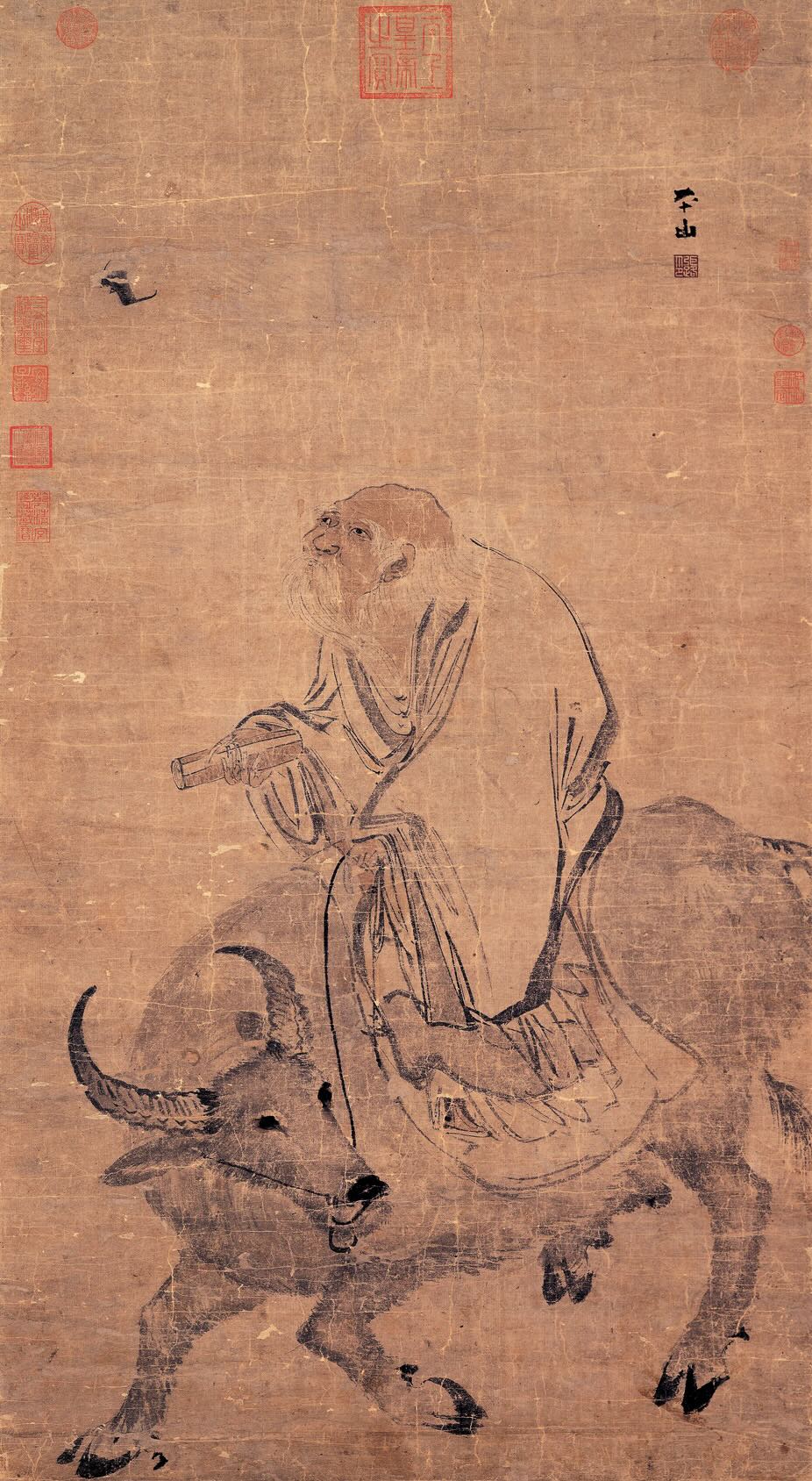
A portrait of Laozi riding an ox by Zhang Lu. From the 16th century, long after Laozi’s legendary life.
Over two thousand years ago in ancient China, a man named Laozi (pronounced and sometimes written Lao Tzu, from the Chinese 老子) taught people a new way of living and seeing the world. His teachings, which he wrote in a book called the Tao Te Ching, explore the mystery of existence and offer advice on how to live in harmony with the world around us. Laozi’s teachings have been very influential in Chinese culture, and they have a universal wisdom that can help us find calm and balance, encouraging us to move with the flow of life and appreciate the simple beauty around us.
Who Was Laozi?
Laozi, whose name means “Old Master,” founded Taoism, a philosophical and spiritual tradition still followed by millions of people today. While details about Laozi’s life are scarce, legends describe him as a wise librarian who left the city seeking a simpler life in nature. Before leaving, a guard at the city gate requested that he write down his knowledge, which led to the creation of the Tao Te Ching. However, some scholars debate whether Laozi was a real person or a symbolic figure, suggesting the text might have been written by several authors.
His Big Ideas
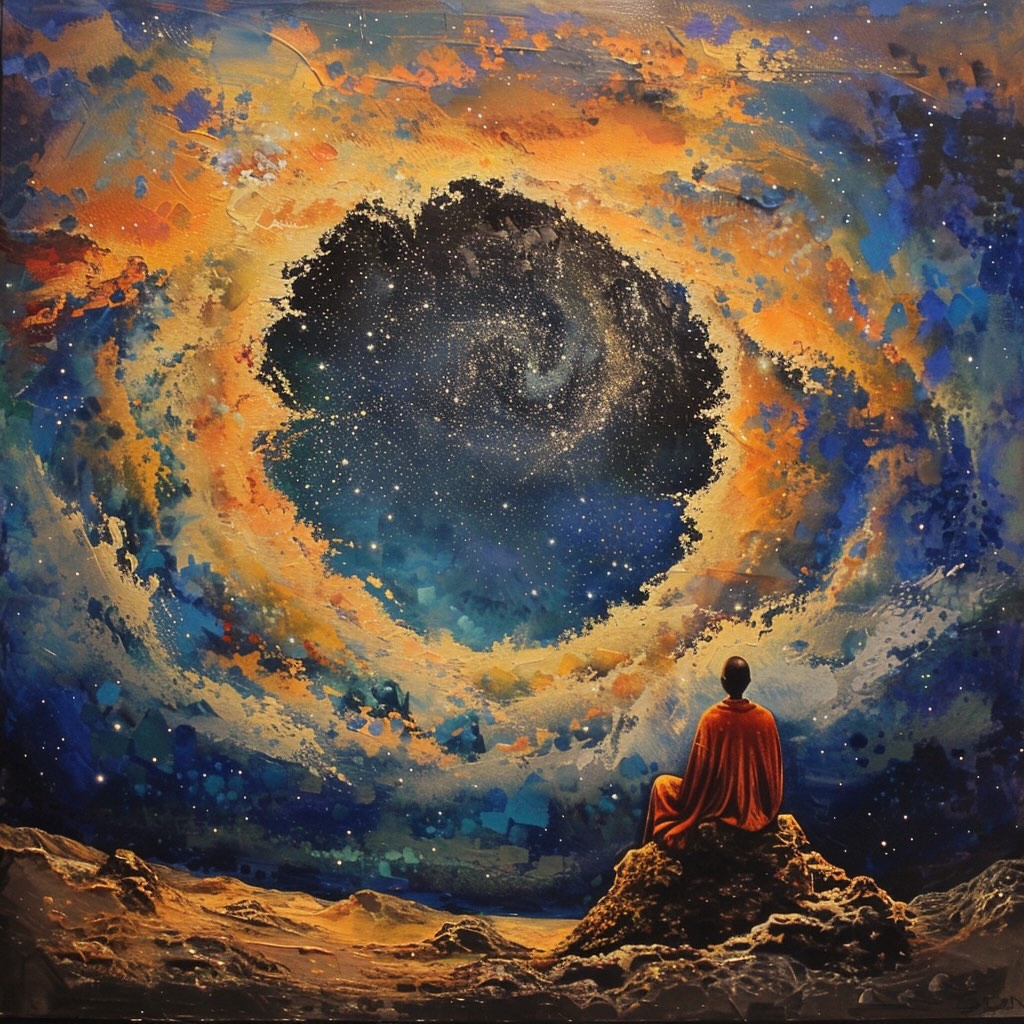
The Tao is the inexpressible source of all things in the universe.
At the heart of Laozi’s teachings is the Tao, a deep and mysterious force that is the source of everything in the universe. Laozi famously begins the Tao Te Ching with the statement, “The tao that can be described is not the eternal Tao.” This tells us that the Tao is beyond words – it’s not something we can fully explain or express in language.
Imagine the Tao as the silent, invisible foundation upon which everything comes to be. It doesn’t choose sides or show preferences; it is the source of all specific things, qualities, and opposites in the world, like night and day, soft and hard, dog and cat, peace and war – yet it isn’t any of these particular things. It’s the formless reality from which all these forms emerge. We can never directly observe the Tao as if it were an object in the world, and can only perceive and name the many things that come out of it. The Tao itself remains a vast, undivided whole, forever elusive and beyond the reach of language.
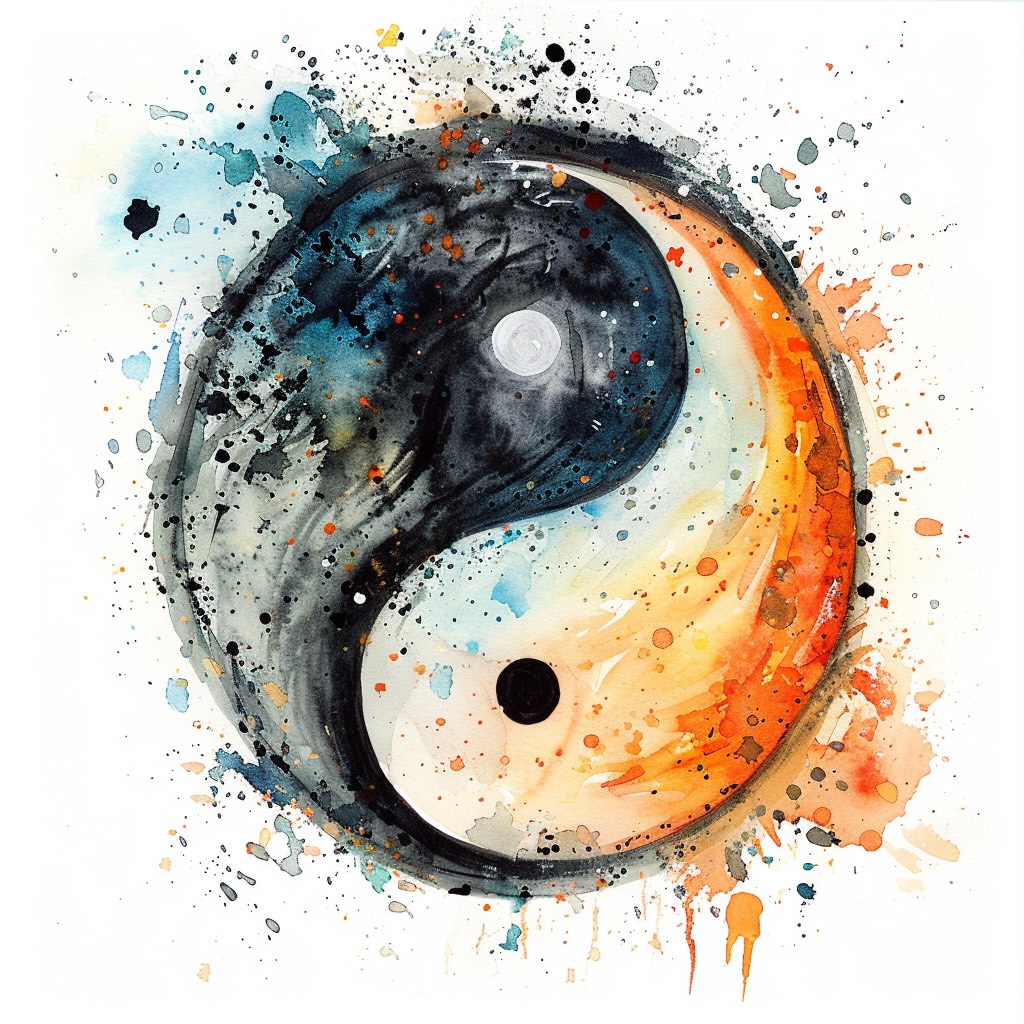
The yin and yang symbol, representing the unity of opposites like light and dark. The Tao is the source that creates and balances all dualities.
Yin and yang illustrate how opposites depend on each other. Yin is dark and cool, while yang is light and warm. They are perfectly opposite or complementary, which means that they are like jigsaw pieces that fit together impeccably. Each lacks what the other has, and so together they form the full picture.
In the yin and yang symbol, you’ll notice a small dot of yin within yang, and a dot of yang within yin. This shows that when we think of one quality, like light, we are also bringing to mind its opposite, dark, because each is defined in relation to the other. As Laozi teaches us, “Long and short define each other.” He believed this for all opposites: high is only high because there is low, warm is only warm because there is cold, and yin is only yin because there is yang.
The Tao is what brings these pairs into existence and keeps a balance between them, helping everything in the world work together smoothly.
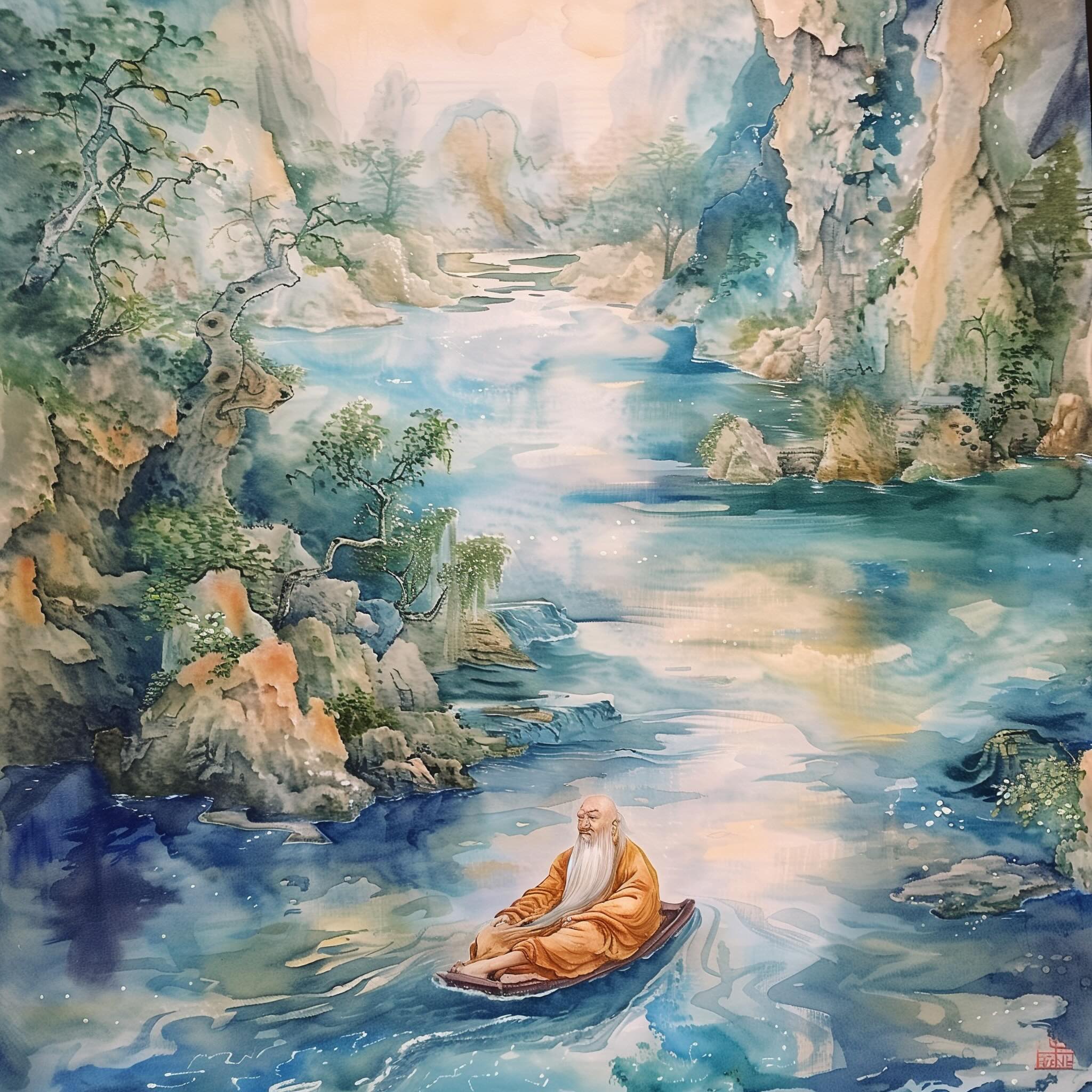
Wu wei is about effortlessly doing things in the most natural way, like flowing with a river’s current instead of paddling against it.
Wu wei (effortless action) is an important teaching from Laozi about acting in the simplest and most efficient ways, using the least possible effort to do what needs to be done. Like a leaf floating down a river, this principle encourages us to align our actions with the natural currents of the Tao. When we embrace wu wei, our efforts feel right and easy, flowing smoothly without strain or struggle.
Simplicity and Naturalness: Laozi’s teachings also highlight the importance of simplicity and naturalness in our lives. He advocated for a lifestyle free from excessive desires and complex schemes, believing that such simplicity leads to a deeper connection with the world and a more profound sense of happiness. By reducing distractions and focusing on what truly matters, we can live more harmoniously with ourselves and our environment.
Laozi’s Importance Today
Laozi’s wisdom is as important now as it was long ago. He teaches us that if we go with the natural flow of things, we can find peace and greater happiness in a life with less struggle and stress. Today, when life is often so busy and complicated, learning to live simply and connecting with the deep mystery of the Tao can make us feel more at ease and better connected to the world around us.
Read the first two verses of the Tao Te Ching
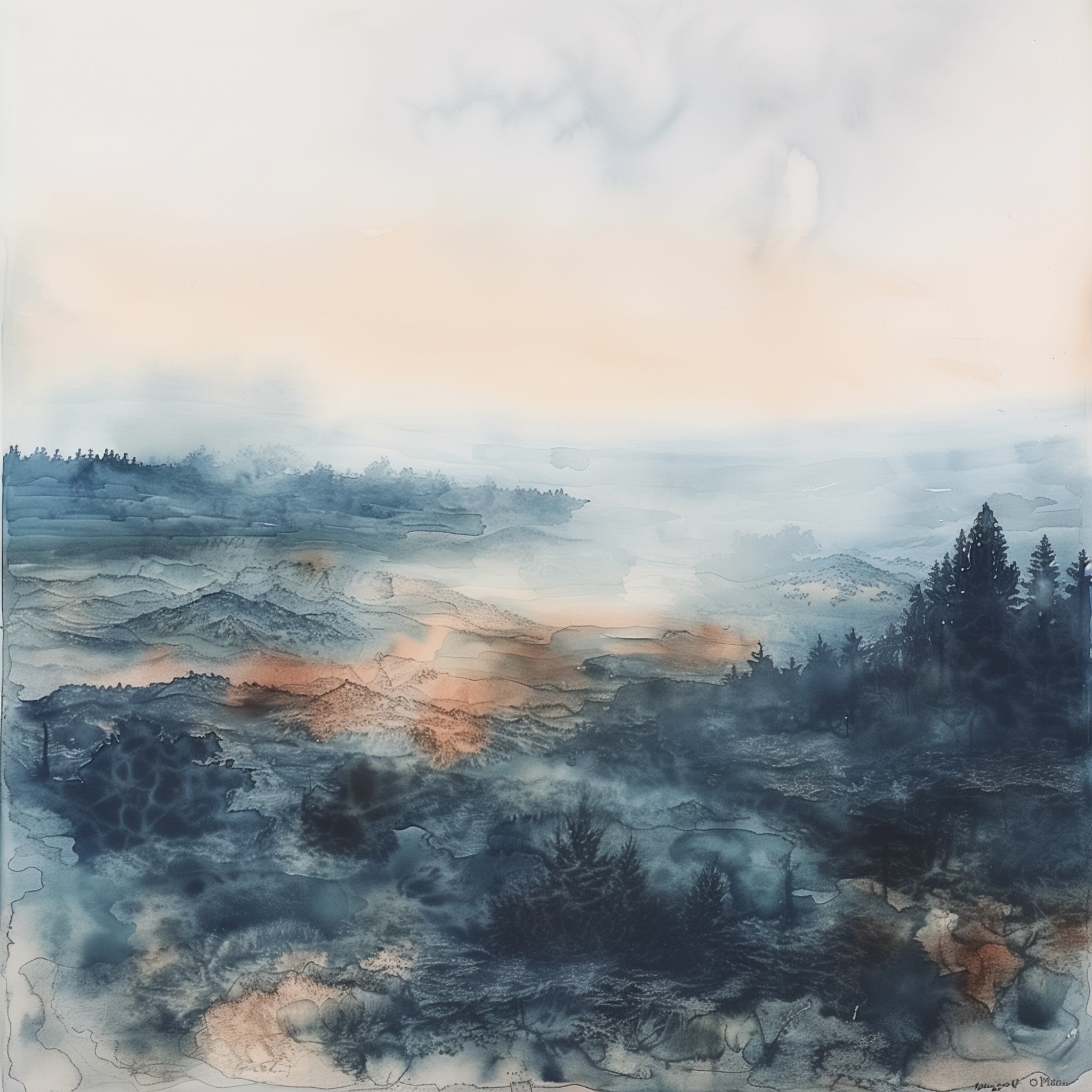
“The tao that can be described is not the eternal Tao.”
1 The tao that can be describedis not the eternal Tao. The name that can be spokenis not the eternal Name.
The nameless is the boundary of Heaven and Earth. The named is the mother of creation.
Freed from desire, you can see the hidden mystery. By having desire, you can only see what is visibly real.
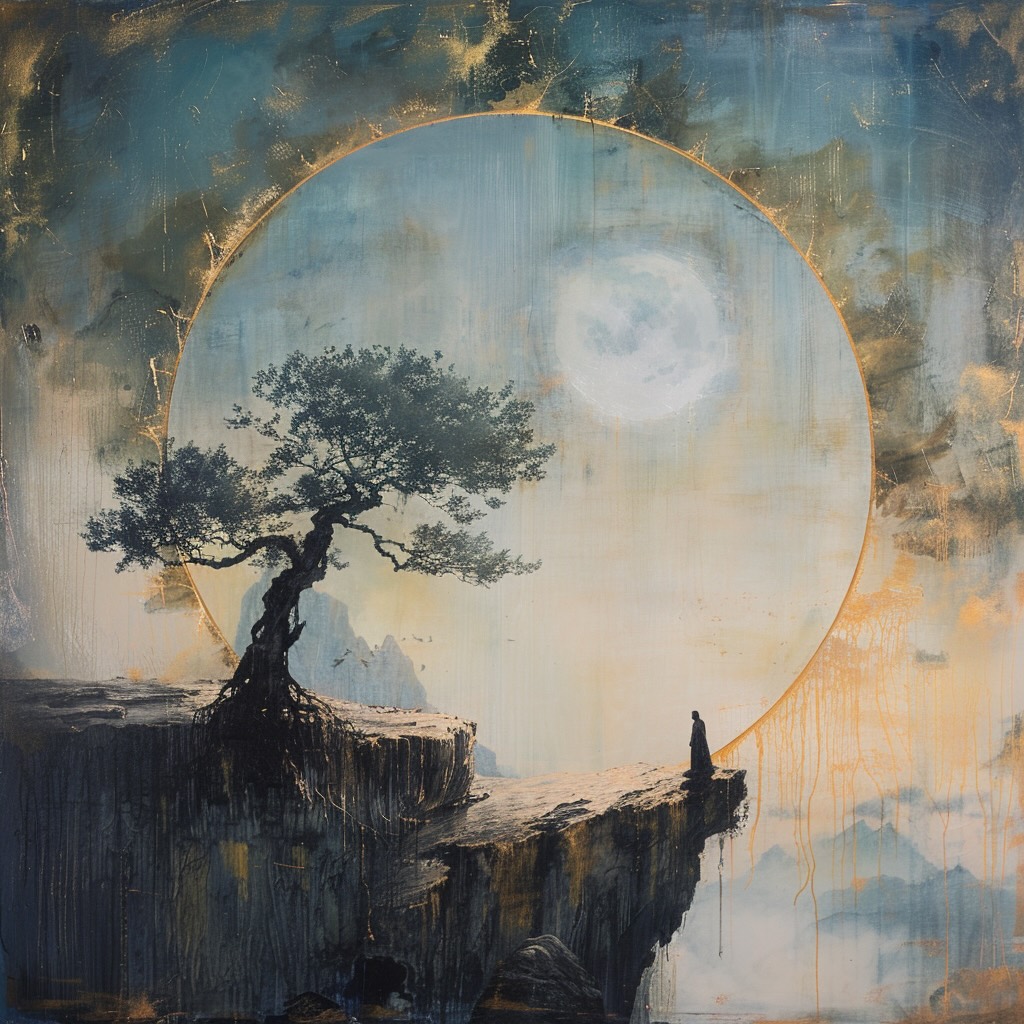
“Mystery and reality emerge from the same source.”
Yet mystery and reality emerge from the same source. This source is called darkness.
Darkness born from darkness. The beginning of all understanding.
2 When people see things as beautiful, ugliness is created. When people see things as good, evil is created.
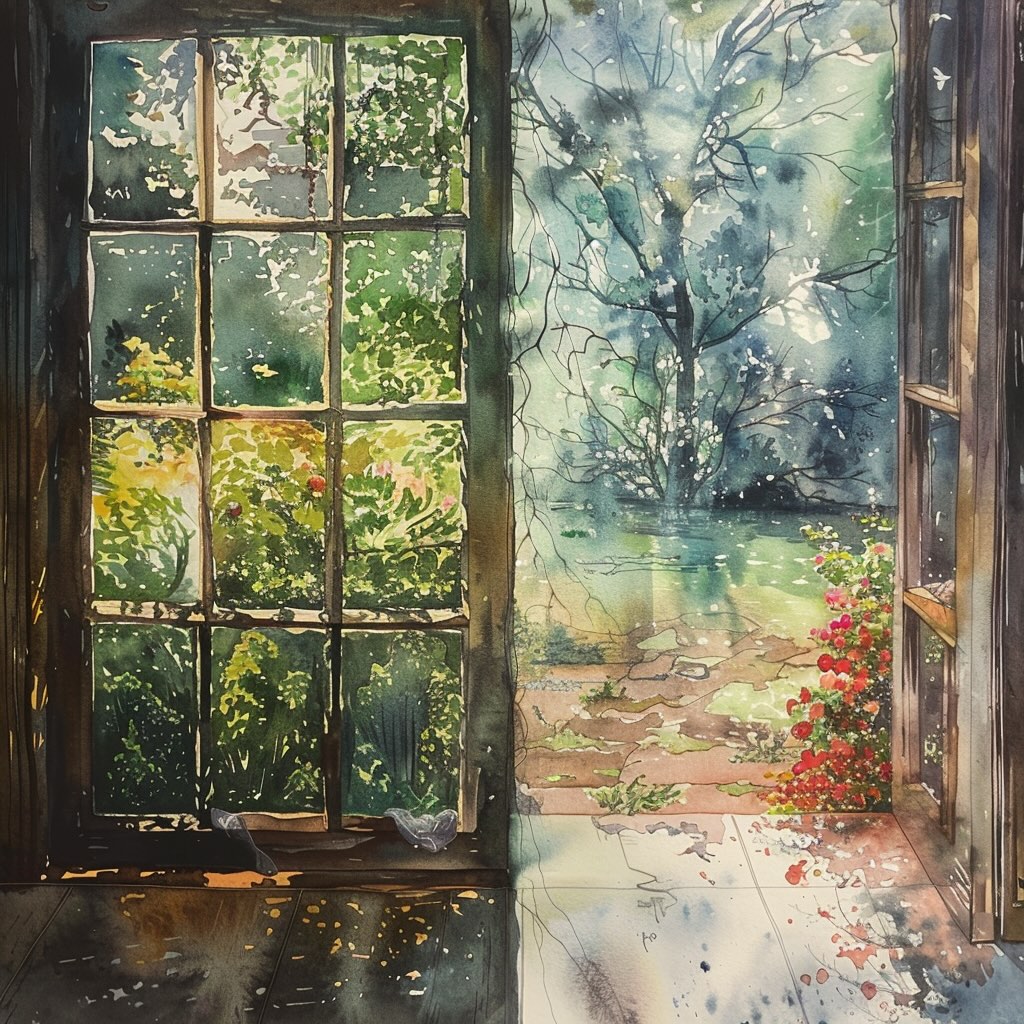
Laozi says that we understand the dark by comparing it to the light, and the same for all pairs of opposites.
Being and non-being produce each other. Difficult and easy complement each other. Long and short define each other. High and low oppose each other. Fore and aft follow each other.
Therefore the Master can act without doing anything and teach without saying a word. Things come her way and she does not stop them; things leave and she lets them go. She has without possessing, and acts without any expectations. When her work is done, she takes no credit. That is why it will last forever.
(From John H. McDonald’s public domain translation of the Tao Te Ching, 1996.)
Think About It
Laozi says that the Tao is beyond names. How do you think the world would look if we saw everything as part of one big whole, rather than as separate things with different names?
If words can’t fully explain the Tao, how do you think we can come to understand it? What are some ways we understand things without words?
Laozi says that when we stop wanting things all the time, we might see and understand the world differently. What do you think you might notice if you spent a whole day without asking for anything new?
How do you feel when you are very quiet and just looking at nature? What do you see or feel that you usually don’t?
Do you think understanding cold helps us appreciate warmth? How might knowing about sadness help us understand happiness?
What does it feel like when you are doing something you love and you lose track of time? How is this like the idea of “wu wei” that Laozi talks about?
When something changes unexpectedly, like a change in plans or a surprise at school, can you go with the flow instead of getting upset?
Laozi suggests that sometimes doing less can actually help more. Have you ever found that not interfering in a situation made things go smoother?
When you have a big task to do, can you tackle it bit by bit, without stressing about making things perfect all at once?
Conclusion
Laozi’s Tao Te Ching offers profound wisdom, helping us explore the depth of simplicity and the strength of softness, while inviting us to contemplate the profound mystery at the heart of existence. By learning from Laozi, we can start to see the world in new ways, begin to live in harmony with the Tao, and find peaceful paths in our everyday lives.

